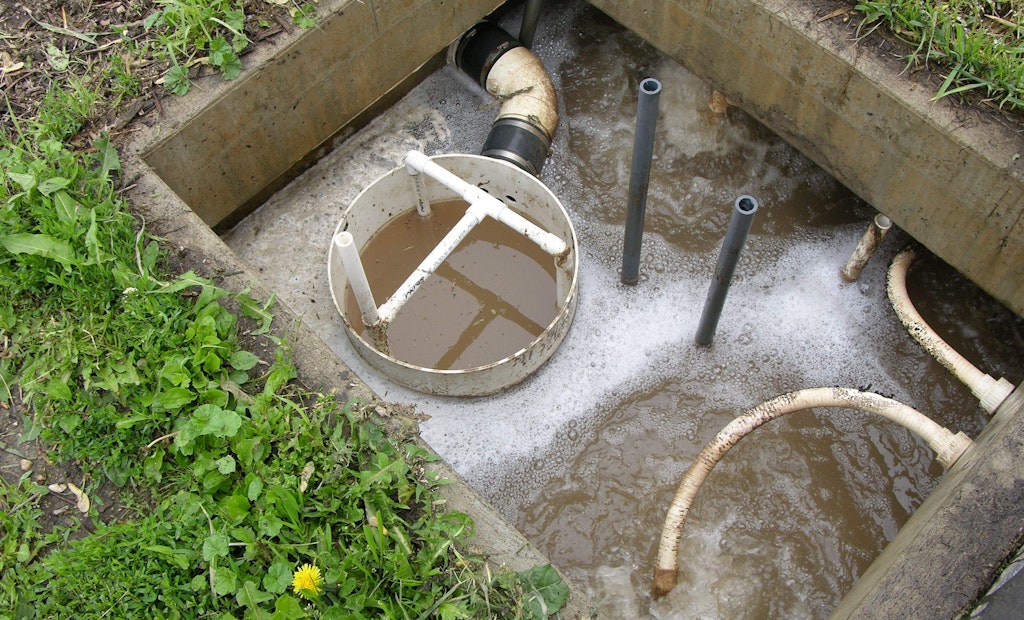
Interested in Systems/ATUs?
Get Systems/ATUs articles, news and videos right in your inbox! Sign up now.
Systems/ATUs + Get AlertsBoth hydraulic and organic loading need to be considered when making a decision about which type of advanced treatment system to select and whether it fits the wastewater treatment needs.
Hydraulic loading, the volume of wastewater being delivered to the wastewater treatment system on a daily basis, is the first consideration used to size not only the ATU but also the final treatment component. From a hydraulic standpoint, total volume, rate and timing are important. ATUs operate most efficiently if there is a consistent wastewater flow as well. So if the rate and amount of wastewater varies significantly during the day or across weeks, an ATU may not be the best choice. For example, ATUs do not operate well in situations where the effluent flow is intermittent, such as lake vacation homes and cabins.
Hydraulic loading can have a particular effect on the clarification chamber; if the flow rate is high there is not adequate time for the effluent in the chamber to complete the treatment processes. Hydraulic loading should be determined by the design, but should be measured if problems are occurring with the unit. Again, both the total flow and timing of the flow should be considered.
Organic loading in the wastewater treatment system relates to the aeration chamber because that is where the organic material is reduced and treated. Aerobic microorganisms in the aeration chamber use the organic matter in the wastewater as their food source. The “food” to microorganism ratio needs to be maintained in balance. A low food-to-microorganism ratio is maintained to have the microorganisms actively consuming the food and the other microorganisms in the mixed liquor.
This low food-to-microorganism ratio is the guiding principle behind the extended aeration system, which results in a low accumulation of residual biomass in the aeration chamber. Excessive food or organic loading will lead to lower effluent quality and greater accumulation of residual biomass in the aeration chamber.
Microbes play a vital role in the aerobic process since they do all the work as far as providing treatment. In order for the microbes to provide treatment, they must be provided with not only the proper amount of food but with optimal pH, oxygen and temperature. Optimal pH is around 7.0, and optimal temperature is about 70 degrees. Dissolved oxygen should be greater than 2.0 mg/L in the aeration component.
Alive and healthy microbes are a light brown color (like the inside of a Milky Way bar) or possibly a rich brown color. If the microbes are dead, they will give off a smell and will be black in color. Appearances and smell can be your best tools to evaluate whether the system is operating the way it should. A musty odor and brown color signify good operation, while a rotten-egg smell and black color indicate a problem with the unit.
If microbes are evaluated under a microscope and are not moving, they are dead. You typically will not use a microscope; however, troubleshooting specialists do use microscopes to determine what microbes are present in the treatment system. It’s often helpful to send a sample of the effluent to a laboratory for analysis to determine level of treatment.
About the Author
Jim Anderson is connected with the University of Minnesota onsite wastewater treatment education program, is an emeritus professor in the university’s Department of Soil Water and Climate, and education coordinator for the National Association of Wastewater Technicians. Send him questions about septic system maintenance and operation by email to kim.peterson@colepublishing.com.
This article is part of a series on ATUs:
- An Introduction to ATUs
- Wastewater Loads and the ATU
- How Well Do You Know Your ATUs?
- ATU Components You Should Know
- ATU Inspection in 3 Easy Steps





